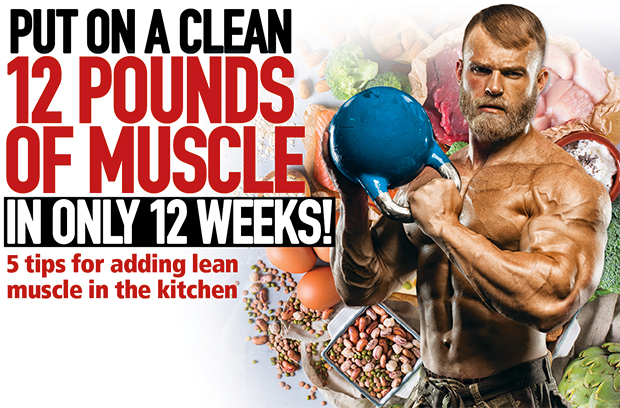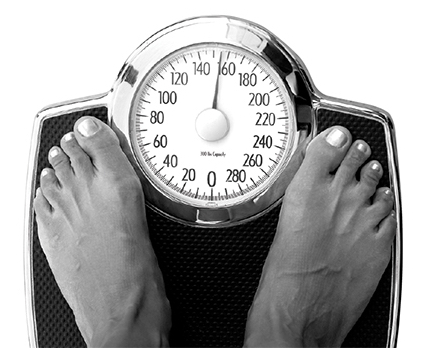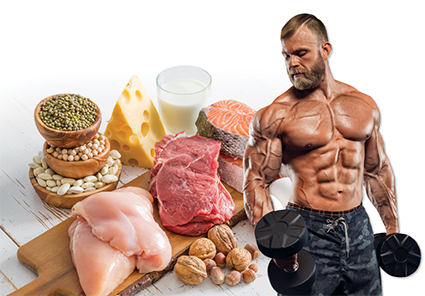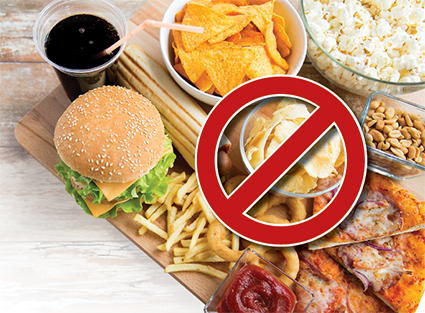Put On a Clean 12 Pounds of Muscle in 12 Weeks

5 tips for adding lean muscle in the kitchen this off-season without blowing up your body fat
Seen your six-pack lately? Chances are good it hasn’t been spotted since the temperatures first fell below freezing. And while we expect it to be MIA for at least another month or two, that doesn’t mean your physique goals have to be abandoned in the near term. In fact, competitive and recreational bodybuilders long ago used the off-season to align their training and eating strategies for putting on mass. Hey, if your body is covered up for six months, why worry about trying to maintain peak condition?

Off-season strategies for adding mass were once called “see-food” diets—you simply eat anything you see. But that approach can often result in adding significantly more body fat, blurring the definition in your physique while increasing health risks.
So instead let’s consider some nutritional tips to improve your odds of putting on quality muscle during your off-season without the extra flab. It’s more work than eating anything you want, but when the sun does come out, you won’t have to spend nearly as long on the treadmill to regain your ripped body.
1. Reset Your Expectations
You probably know a guy who put on 20 pounds of muscle within his first month or two, but realize he’s an outlier. For most men, expect a weight gain between 0.5 and 1.5 pounds each week, which equates to 2 to 6 pounds a month. Sounds measly, right? But doing so any faster likely means you’ll add significant amounts of body fat.
Gaining weight requires you to eat more calories, about 400 to 750 more each day (smaller guys and endomorphs can focus on the lower end) than what you’re taking in if your body weight is currently at an equilibrium. (To compute your baseline number of calories, Google “calorie calculator.”) In the presence of good nutrition, the right training plan, and ample rest, the positive nitrogen balance will encourage new muscle growth. We’re aiming for the Goldilocks of growth: not too many and not too few.
 In general, you want to eat about 50 percent of your calories from carbs (mostly complex sources; fruits and veggies come in here too), another 25 percent from protein and the last 25 percent from fat (about half saturated, half unsaturated). There are any number of variations of this ratio in various diets, but remember that the total number of daily calories is most important in creating a daily surplus.
In general, you want to eat about 50 percent of your calories from carbs (mostly complex sources; fruits and veggies come in here too), another 25 percent from protein and the last 25 percent from fat (about half saturated, half unsaturated). There are any number of variations of this ratio in various diets, but remember that the total number of daily calories is most important in creating a daily surplus.
2. Weigh In Frequently

Monitoring the scale is the best way to know if you’re on track. Because of daily fluctuations, pay attention to small trends that indicate you’re moving in the right direction from week to week. Remember, knowing your baseline number of calories and eating a consistent number of calories above and beyond that will help you identify whether you’re gaining weight too quickly or too slowly.
Tracking and counting calories is, yes, a bitch until you learn to eyeball it. Then, adjust your calories up or down if you’re not in the target weight-gain range. Clearly if you’re gaining weight too fast, you’ll want to reduce your daily calories to better ensure your gains are of the lean variety. Conversely, if the scale isn’t budging, you’ll want to increase the number of calories you eat.
At the end of 12 weeks, it’s reasonable to put on about 12 pounds, plus or minus. I know I’ve heard promises of faster muscle growth, but most of us (myself included) have just average genetics. Remember, the jacked guys you see today have been doing this for years, and like money in your savings account, it’s the multiplier effect over time that compounds your interest!
3. Think Protein First

All macronutrients are clearly important, but coming up short in protein consumption can quickly derail the best of intentions. Protein is broken down into amino acids, which are the building blocks of muscle tissue and are critical for tissue repair and growth.
You’ll often see a generalization about consuming about one gram of protein per pound of body weight daily. That’s actually a bit on the high end, but remember that athletes have greater protein needs than the general public, and rounding up is easy to compute.
Your total daily protein grams should be divided into about six daily feedings of near-equal size. That’s not bro-science: Muscle protein synthesis—the process that builds muscle—is elevated for longer periods of time when you eat more frequently than when you consume fewer meals. A serving of 25 to 35 grams of protein at each meal is right where you want to be. Choosing leaner sources—a sirloin steak with visible fat trimmed rather than a rib eye, for example—saves you a boatload of extra calories from saturated fat (not the good kind).
For some, consuming the minimum amount of protein daily through whole-food meals can be a challenge, and that’s where taking supplemental protein can help. Protein shakes make great between-meal snacks, are inexpensive, and are super-convenient.
4. Think Clean

Besides getting the right number of calories daily in the right ratios, you also want to consume them in the right kinds of foods. You think that jelly donut, Pop-Tart, and chocolate cake will somehow magically convert to the building blocks of muscle in your digestive system? Keep dreaming!
Foods more likely to add pudge than muscle are sometimes called “dirty” foods, and are often consumed as part of a “dirty bulk.” They include sweets, processed foods, carb- and fat-rich fast foods, desserts, many kinds of sugar-sweetened beverages, and just about anything on the inner shelves of a supermarket. (Nutritionists recommend you stay on the perimeter of the market for healthier food choices.)
Clean foods are natural and unprocessed, are invariably loaded with more micronutrients, and have fewer ingredients on the label—if there is a label. Think fruits and vegetables, which are high in fibre, and lean cuts of meat that are low in saturated fat. By restricting saturated and trans fats, avoiding sugar-sweetened products, and limiting calorie-spiked sauces and dressings, you’ll find it more difficult to overeat if that’s your tendency, which helps you avoid fat-storing insulin spikes.
5. And About Your Workout
If you want to selectively put on muscle via nutrition, your training program needs to be in sync, and not just any kind of workout will do it optimally. Familiarize yourself with the most important training variables, which include the following:

- Multi-joint exercises should form the backbone of your training. These are movements in which two or more sets of joints are working in unison, which recruit more muscle mass and thus have a greater anabolic stimulus. Bench presses, deadlifts, squats, rows, shoulder presses, you get the idea.
- Increase training volume (total weight lifted during a body part session) by adding exercises that work the target muscle from different angles.
- Choose loads such that you approach muscle failure within the 6- to 12-rep range, which is best for hypertrophy. Personally, I start at the lower end of that range early in my workout and progress to the higher end as fatigue sets in.
- Train to muscle failure. Don’t leave reps in the tank, but also don’t take all your sets to and past muscle failure either. The science does notsupport going to failure on every set, even if your training mentality is geared toward giving everything you’ve got on every set.
- Keep rest periods to 60 to 90 seconds. The brevity assures accumulated fatigue, a marker for muscle growth.
For more advice on transforming your physique, check out this article.

